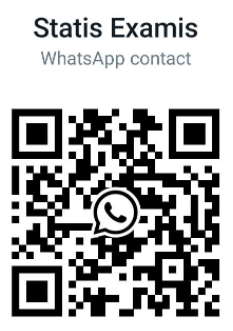Navigation » List of Schools » East Los Angeles College » Physiology » Physiology 001 – Introduction to Human Physiology » Winter 2021 » Lecture Exam 3
Question #1
A Increased parasympathetic stimulation
B Increased venous return
C Increased blood volume
D Increased activity of the skeletal muscle pump
E Increased sympathetic stimulation
Question #2
A Increase total peripheral resistance (TPR)
B Decrease heart rate
C Decrease stroke volume
D Increase stroke volume
E Increase heart rate
Question #3
A making the children sit on the toilet until they defecate at least once a day.
B feeding the children foods with more lipid content.
C avoiding foods that can lead to accumulation of toxins in feces.
D avoiding milk, the children may be lactose intolerant.
E feeding the children foods with a high proportion of cellulose and other indigestible carbohydrates.
Question #4
A The presence of fatty acids in the duodenum stimulates emptying of the stomach.
B The presence of fatty acids in the duodenum stimulates the secretion of gastrin, which in turn stimulates bile synthesis in the gallbladder.
C The presence of fatty acids in the duodenum stimulates the secretion of CCK, which in turn stimulates secretion of pancreatic enzymes.
D The presence of fatty acids in the duodenum stimulates the secretion of secretin, which in turn stimulates contraction of the gallbladder.
E The presence of fatty acids in the stomach stimulates the secretion of secretin, whichinhibits motility of the large intestine.
Question #5
A FALSE
B TRUE
Question #6
A FALSE
B TRUE
Question #7
A TRUE
B FALSE
Question #8
A Histamine, Gastrin and Acetylcholine
B Gastrin
C Acetylcholine
D Histamine
E CCK
F Somatostatin
Question #9
A It is secreted by the endocrine pancreas.
B It is mainly produced in the liver, and secreted into the small intestine.
C It emulsifies lipids.
D It is produced in the exocrine pancreas, and catalyzes the degradation of chylomicrons into proteins and fats.
E It catalyzes the breakdown of triglycerides into monoglycerides and free fatty acids.
Question #11
A Digestible polysaccharides are broken down into the monosaccharides glucose, galactose, and fructose, which can be absorbed.
B Lactose intolerance results from an insufficiency of the enzyme amylase.
C Carbohydrate digestion begins in the stomach.
D Cellulose from plants is a polymer of glucose that can be easily digested and absorbed by the human GI tract.
E Sucrose is the main form of carbohydrate that can be absorbed by active transport across the intestinal epithelium.
Question #12
A FALSE
B TRUE
Question #13
A TRUE
B FALSE
Question #14
A eccentric.
B segmentation.
C mass movement.
D distension.
E peristalsis.
Question #15
A transferrin.
B hemochromatosis.
C glycogen.
D myoglobin.
E ferritin.
Question #16
A The upper esophageal sphincter relaxes.
B The glottis closes.
C The lower esophageal sphincter relaxes.
D The pyloric sphincter relaxes.
E Respiration is inhibited.
Question #17
A TRUE
B FALSE
Question #18
A TRUE
B FALSE
Question #19
A a hypervariable region of immunoglobulin DNA.
B the heavy immunoglobulin chain only.
C the light immunoglobulin chain only.
D gamma immunoglobulin only.
E a specific antigen-binding site formed by heavy and light chains.
Question #20
A They may have genetic information in the form of RNA.
B They consist of a nucleic acid surrounded by a carbohydrate shell.
C They may cause a host cell to become cancerous.
D They may reside in a host cell for years without killing it.
E They require a host cell in order to reproduce themselves.
Question #21
A FALSE
B TRUE
Question #22
A TRUE
B FALSE
Question #23
A Cytotoxic hypersensitivity
B Immune-complex hypersensitivity
C Delayed hypersensitivity
D Immediate hypersensitivity
Question #24
A memory cells.
B macrophages.
C monocytes.
D T cells.
E cytokines.
Question #25
A The risk to anRh-positive fetus of an Rh-negative mother is lessened if she haspreviously carried anRh-negative fetus.
B An Rh-negative fetus may be at risk if its mother is Rh-positive.
C A fetus with type B blood may be at risk if its mother has type O blood.
D An Rh-positive fetus may be at risk if its mother is Rh-negative.
E The greatest risk to a fetus occurs when both mother and fetus are Rh-positive.
Question #26
A Colony-stimulating factors
B Type 1 interferons
C Interleukin 2
D Type 2 interferons
E Antibodies
Question #27
A The primary lymphoid organs are the bone marrow and thymus.
B Once a lymphocyte reaches a secondary lymphoid organ, it remains there for its lifetime.
C The tonsils contain lymphocytes, macrophages, and dendritic cells that respond to microbes in food.
D The thymus secretes protein hormones, collectively called thymopoietins.
E Large numbers of macrophages and lymphocytes are found in the lymph nodes and spleen.
Question #28
A TRUE
B FALSE
Question #29
A Respiratory alkalosis
B Metabolic acidosis
C Increased blood P CO2
D Metabolic alkalosis
E Respiratory acidosis
Question #30
A Higher than normal arterial pH
B Lower than normal arterial PCO2
C Breathing carbon monoxide
D Breathing air with increased PCO2
E Iron-deficiency anemia
Question #31
A FALSE
B TRUE
Question #32
A FALSE
B TRUE
Question #34
A FALSE
B TRUE
Question #35
A AsH 2CO 3
B As carbonic anhydrase
C As dissolved CO 2
D Bound to hemoglobin
E As dissolved HCO 3 –
Question #36
A sympathetic; contraction; increase
B motor; contraction; decrease
C motor; contraction; increase
D parasympathetic; contraction; decrease
E sympathetic; relaxation; increase
Question #37
A No change from sea level, as long as we breathe in the same volume of air.
B Alveolar PO 2 increases.
C Alveolar PO 2 decreases.
Question #38
A FALSE
B TRUE
Question #39
A TRUE
B FALSE
Question #40
A Some backflow of blood into the aorta during ventricular diastole
B Some backflow of blood into the left ventricle during ventricular ejection
C Some backflow of blood into the left atrium during ventricular systole
D Some backflow of blood into the aorta during ventricular ejection
E Some backflow of blood into the left ventricle during ventricular diastole
Question #41
A More fluid than usual will flow out of the capillary based on the hydrostatic pressure.
B Less fluid than usual will flow out of the capillary based on the hydrostatic pressure.
C More fluid than usual will flow out of the capillary based on the osmotic pressure.
D Less fluid than usual will flow out of the capillary based on the osmotic pressure.
Question #42
A Alpha-adrenergic receptor agonists
B Beta-adrenergic receptor antagonists
C A drug that increases T-type Ca 2+ channel currents
D Cholinergic antagonist
E A drug that increasesL-type Ca 2+ channel currents
Question #43
A FALSE
B TRUE
Question #44
A FALSE
B TRUE
Question #45
A FALSE
B TRUE
Question #46
A the abdominal organs.
B the skin.
C the brain.
D the skeletal muscles
E the heart.
Question #47
A Blood clots are digested by plasmin.
B Activation of the reactions that lead to blood clotting ultimately lead to blood clot dissolution.
C It involves aggregation of soluble fibrin fragments into fibrin.
D Plasminogen is an inactive precursor of the enzyme plasmin.
E Tissue plasminogen activator (t-PA) is secreted by endothelial cells.
Question #48
A Cardiac output
B Total peripheral resistance
C Mean arterial pressure
D Heart rate
E Hydrostatic pressure in the capillaries
Question #49
A FALSE
B TRUE
Question #50
A TRUE
B FALSE
Question #51
A Internal bleeding
B Dietary vitamin B12 deficiency
C Dietary iron deficiency
D Lung disease
E Kidney disease
Question #52
A interneurons.
B valves.
C coronary vessels.
D gap junctions.
E desmosomes.




